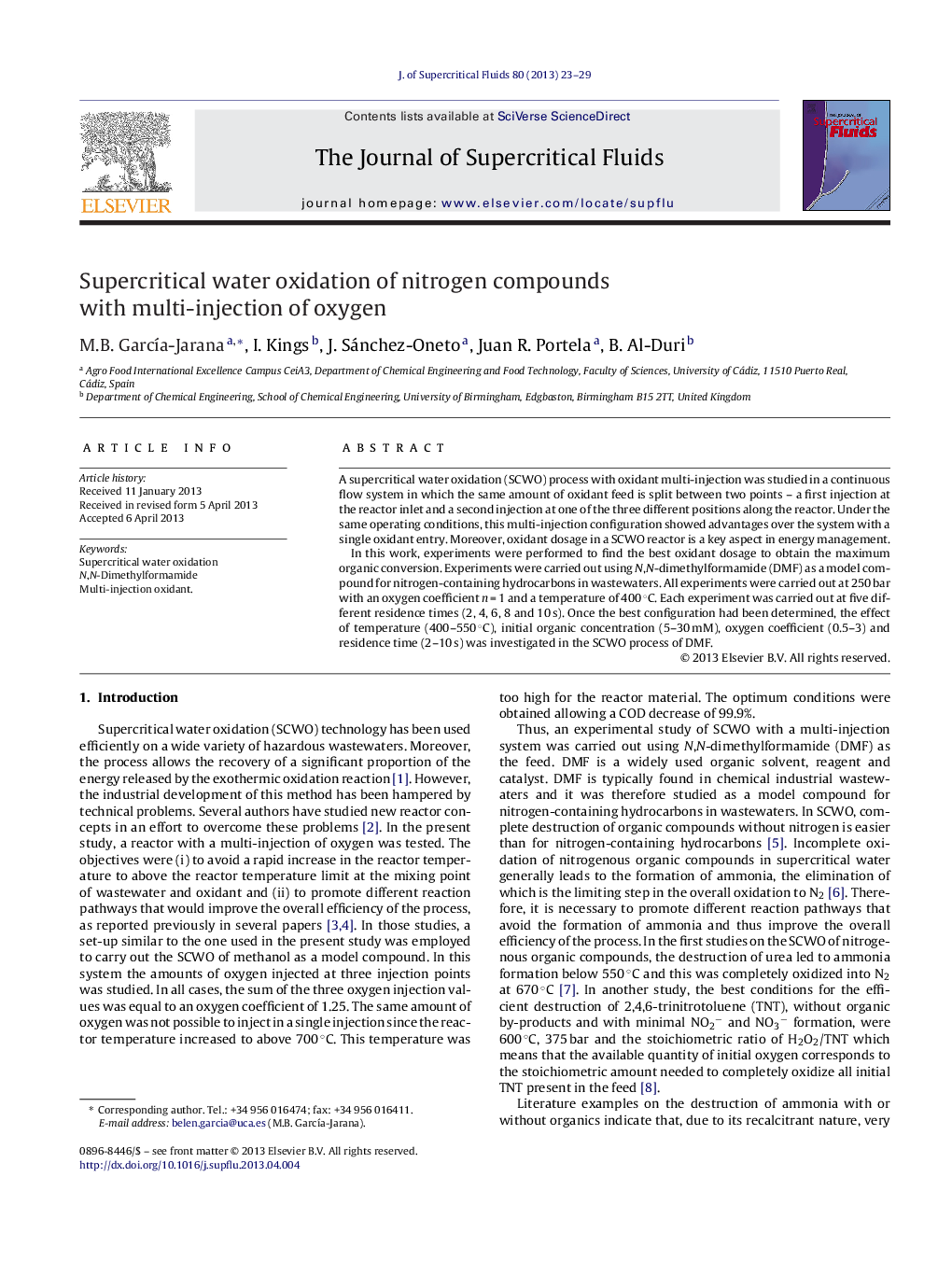| Article ID | Journal | Published Year | Pages | File Type |
|---|---|---|---|---|
| 230757 | The Journal of Supercritical Fluids | 2013 | 7 Pages |
•A SCWO system with multi-injection of oxidant has been tested at laboratory scale.•DMF was studied as a representative organic compound that is difficult to oxidize.•Multi-oxidant experiments showed better results than single entry experiments.•The best position to supply the second injection seems to be at 3 s in the experiments with a total residence time of 6 s.•The optimum split-ratio was 75% of oxidant at the reactor inlet and 25% at the second injection.
A supercritical water oxidation (SCWO) process with oxidant multi-injection was studied in a continuous flow system in which the same amount of oxidant feed is split between two points – a first injection at the reactor inlet and a second injection at one of the three different positions along the reactor. Under the same operating conditions, this multi-injection configuration showed advantages over the system with a single oxidant entry. Moreover, oxidant dosage in a SCWO reactor is a key aspect in energy management.In this work, experiments were performed to find the best oxidant dosage to obtain the maximum organic conversion. Experiments were carried out using N,N-dimethylformamide (DMF) as a model compound for nitrogen-containing hydrocarbons in wastewaters. All experiments were carried out at 250 bar with an oxygen coefficient n = 1 and a temperature of 400 °C. Each experiment was carried out at five different residence times (2, 4, 6, 8 and 10 s). Once the best configuration had been determined, the effect of temperature (400–550 °C), initial organic concentration (5–30 mM), oxygen coefficient (0.5–3) and residence time (2–10 s) was investigated in the SCWO process of DMF.
Graphical abstractFigure optionsDownload full-size imageDownload as PowerPoint slide
